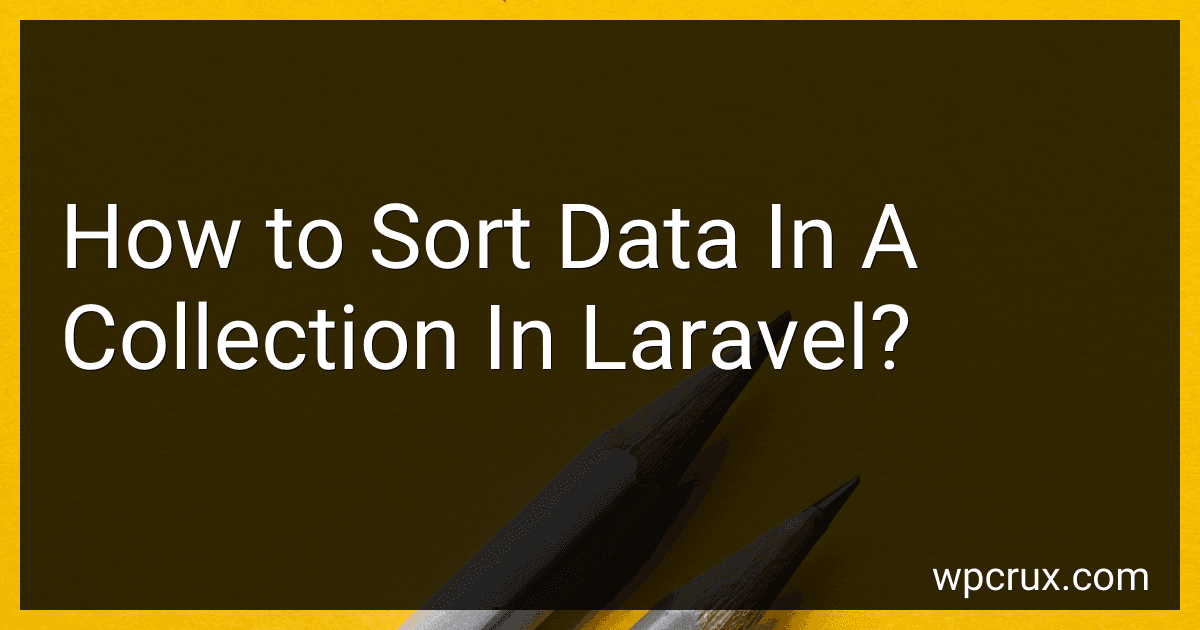Posts (page 28)
-
 7 min readTo send data from a Laravel controller to Vue.js, you can use the JSON response from the controller. In your Laravel controller, you can fetch the data from the database or any other source and return it as a JSON response using the json method.For example, in your controller method: public function getData() { $data = YourModel::all(); return response()->json($data); } Then, in your Vue.
7 min readTo send data from a Laravel controller to Vue.js, you can use the JSON response from the controller. In your Laravel controller, you can fetch the data from the database or any other source and return it as a JSON response using the json method.For example, in your controller method: public function getData() { $data = YourModel::all(); return response()->json($data); } Then, in your Vue.
-
 6 min readTo append rows in a CSV export in Laravel, you can use the Laravel Excel package. First, you need to create a new Excel instance and set the desired export format (e.g., CSV). Then, you can append rows to the export file by calling the append method and passing an array of data for each row you want to add. Finally, you can save the export file using the store or download method.
6 min readTo append rows in a CSV export in Laravel, you can use the Laravel Excel package. First, you need to create a new Excel instance and set the desired export format (e.g., CSV). Then, you can append rows to the export file by calling the append method and passing an array of data for each row you want to add. Finally, you can save the export file using the store or download method.
-
 5 min readIn Laravel, it is best practice to have a primary key for every table. However, if you really need to create a table without a primary key, you can do so by manually writing the SQL query in the migration file instead of using the Schema Builder methods provided by Laravel.You can create a table without a primary key by using the table method on the Schema facade and then using the create method to define the columns of the table.
5 min readIn Laravel, it is best practice to have a primary key for every table. However, if you really need to create a table without a primary key, you can do so by manually writing the SQL query in the migration file instead of using the Schema Builder methods provided by Laravel.You can create a table without a primary key by using the table method on the Schema facade and then using the create method to define the columns of the table.
-
 4 min readIn Laravel, you can loop through an array using the foreach loop. To do this, you can use the following syntax: @foreach($array as $item) // Loop body @endforeach In this syntax, $array is the array you want to loop through, and $item is the variable that represents each item in the array during each iteration of the loop.Inside the loop body, you can access and manipulate the current item using the $item variable.
4 min readIn Laravel, you can loop through an array using the foreach loop. To do this, you can use the following syntax: @foreach($array as $item) // Loop body @endforeach In this syntax, $array is the array you want to loop through, and $item is the variable that represents each item in the array during each iteration of the loop.Inside the loop body, you can access and manipulate the current item using the $item variable.
-
 6 min readTo sort data in a collection in Laravel, you can use the sortBy method provided by Laravel's collection class. This method allows you to sort the collection by a specific key or attribute.For example, if you have a collection of users and you want to sort them by their name, you can do the following: $users = User::all(); $sortedUsers = $users->sortBy('name'); This will sort the users collection by the name attribute in ascending order.
6 min readTo sort data in a collection in Laravel, you can use the sortBy method provided by Laravel's collection class. This method allows you to sort the collection by a specific key or attribute.For example, if you have a collection of users and you want to sort them by their name, you can do the following: $users = User::all(); $sortedUsers = $users->sortBy('name'); This will sort the users collection by the name attribute in ascending order.
-
 5 min readTo make a route with hashtag href in Laravel, you can define a route in your routes file using the Route::get() method. In the route definition, you can specify the path and any necessary parameters. Once the route is defined, you can use the href attribute with a hashtag to link to that route within your blade views. This allows you to create dynamic and interactive web applications with Laravel.
5 min readTo make a route with hashtag href in Laravel, you can define a route in your routes file using the Route::get() method. In the route definition, you can specify the path and any necessary parameters. Once the route is defined, you can use the href attribute with a hashtag to link to that route within your blade views. This allows you to create dynamic and interactive web applications with Laravel.
-
 4 min readTo get the user id from a Laravel Passport token, you can use the Auth facade provided by Laravel. After decoding the token, you can access the user id by using the id key in the payload of the token.
4 min readTo get the user id from a Laravel Passport token, you can use the Auth facade provided by Laravel. After decoding the token, you can access the user id by using the id key in the payload of the token.
-
 5 min readTo refresh a Laravel cookie using Vue.js, you can use the following approach:Create a method in your Vue.js component that sends a request to the server to update the cookie value.Inside the method, make an HTTP request to the Laravel route that will update the cookie value.In the Laravel controller method that handles the request, update the cookie value using the cookie method.Return a response from the controller method indicating the successful update of the cookie value.Finally, in the Vue.
5 min readTo refresh a Laravel cookie using Vue.js, you can use the following approach:Create a method in your Vue.js component that sends a request to the server to update the cookie value.Inside the method, make an HTTP request to the Laravel route that will update the cookie value.In the Laravel controller method that handles the request, update the cookie value using the cookie method.Return a response from the controller method indicating the successful update of the cookie value.Finally, in the Vue.
-
 6 min readTo customize the log output for a job in Laravel, you can use the Monolog library which is included by default in Laravel.You can create a new instance of the Logger class and customize the log format and handlers as needed. You can add custom handlers, formatters, and processors to modify the log output.You can also set different log levels for different parts of your application or for specific jobs by using the Monolog library.
6 min readTo customize the log output for a job in Laravel, you can use the Monolog library which is included by default in Laravel.You can create a new instance of the Logger class and customize the log format and handlers as needed. You can add custom handlers, formatters, and processors to modify the log output.You can also set different log levels for different parts of your application or for specific jobs by using the Monolog library.
-
 6 min readTo join two tables in Laravel, you can use the Eloquent ORM which allows you to define relationships between your models. You can specify the type of relationship (e.g. one-to-one, one-to-many, many-to-many) between the two tables in the model classes.To perform a join operation in Laravel, you can use the join() method along with the on() method to define the foreign key relationship between the tables.
6 min readTo join two tables in Laravel, you can use the Eloquent ORM which allows you to define relationships between your models. You can specify the type of relationship (e.g. one-to-one, one-to-many, many-to-many) between the two tables in the model classes.To perform a join operation in Laravel, you can use the join() method along with the on() method to define the foreign key relationship between the tables.
-
 4 min readTo avoid queries inside a loop in Laravel, you can use eager loading to load relationships upfront and reduce the number of queries. You can also use the with() method to load related models in advance. Another option is to use the whereIn() method to retrieve multiple records at once instead of making individual queries for each record. Additionally, you can use the lazy loading feature to only load related models when they are accessed, rather than loading them all at once.
4 min readTo avoid queries inside a loop in Laravel, you can use eager loading to load relationships upfront and reduce the number of queries. You can also use the with() method to load related models in advance. Another option is to use the whereIn() method to retrieve multiple records at once instead of making individual queries for each record. Additionally, you can use the lazy loading feature to only load related models when they are accessed, rather than loading them all at once.
-
 5 min readTo upload multiple images into a database using Laravel, you can follow these steps:Create a form in your view that allows users to select and upload multiple images.In the controller, write a method to handle the image upload. Use the request object to retrieve the images and save them to a storage directory.After saving the images, loop through them and insert each image's file path or URL into the database table using Laravel's Eloquent model.
5 min readTo upload multiple images into a database using Laravel, you can follow these steps:Create a form in your view that allows users to select and upload multiple images.In the controller, write a method to handle the image upload. Use the request object to retrieve the images and save them to a storage directory.After saving the images, loop through them and insert each image's file path or URL into the database table using Laravel's Eloquent model.